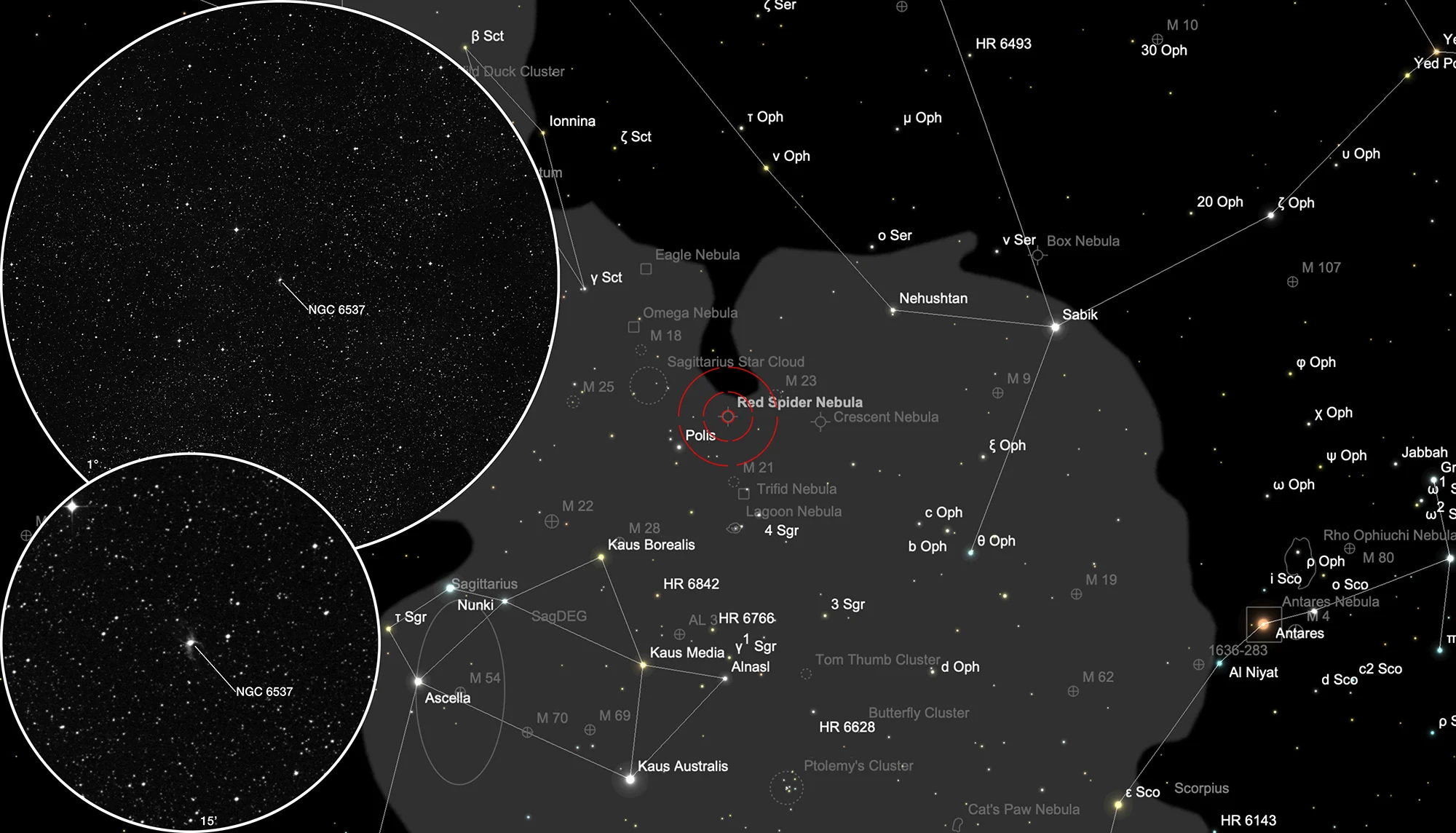Red Spider Nebula (NGC 6537)

History
The planetary Nebula NGC 6537 was discovered on 15th July 1882 by the American astronomer Edward Pickering using visual spectroscopy with the 15 inch refractor of Harvard College Observatory. [277] The description by J. L. E. Dreyer reads «planetary, bright, small, stellar». [313]
Physical Properties
NGC 6537 is a «butterfly» or bipolar (two-lobed) planetary nebula. The S-shaped symmetry of the lobes in the image is believed to be due to the presence of a companion to the hot central star. The waves are generated by supersonic shocks formed when the local gas is compressed and heated in front of the rapidly expanding lobes. They reach peaks 100 billion kilometres high and must have been produced by a powerful wind blowing with a speed of 2000-4500 km/s. The waves themselves move outwards at a slower rate of 300 km/s. The temperature of the gas waves is about 10'000 K. The process appears to have been underway long enough to make the edges of the lobe walls look as if they have started to fracture into wave crests. Investigations have shown that the central white dwarf must have a temperature of at least half a million degrees, making it one of the hottest stars known, emitting primarily X-rays. Distance is estimated to 3000 light-years. [578]
Apparent magnitudes, measured in different spectral bands: V=13.58, J=10.548, H=10.176, K=9.172 [145]
| Designations | PN G010.1+00.7: NGC 6537, PK 10+00.1, ARO 52, ESO 590-01, He 2- 340, My 115, Sa 2-294, VV 147, VV' 339 |
| Right Ascension (J2000.0) | 18h 05m 13s |
| Declination (J2000.0) | -19° 50' 14" |
| Dimensions | 10." (optical), > 9." (radio) |
| Distance | 2.4 kpc |
| Radial Velocity | -16.0 ± 3.0 km/s |
| Expansion Velocity | 18.0 (O-III) km/s |
| C-Star Designations | AG82 284, CSI -19 -18023, GCRV 10524, HD 312582 |
| C-Star Magnitude | B: >19.8, V: >18.8 |
| Discoverer | PICKERING 1882 |
Finder Chart
The planetary nebula NGC 6537 is located in the star rich region of constellation Sagittarius. The best time for observation is in the months February to November.
Visual Observation
500 mm Aperture: In the 27 mm Tele Vue Panoptic (87x), NGC 6537 is barely larger than a tiny star. When you look past it, it appears somewhat diffuse. At higher magnification (9 mm Tele Vue Nagler, 263x), no further details become visible. The expected "spider legs" are not discernible. However, the sky was somewhat hazy. — 20" f/4.7 Ursus Dobson, Astrofarm Tivoli, Namibia, 11. 9. 2023, Bernd Nies
